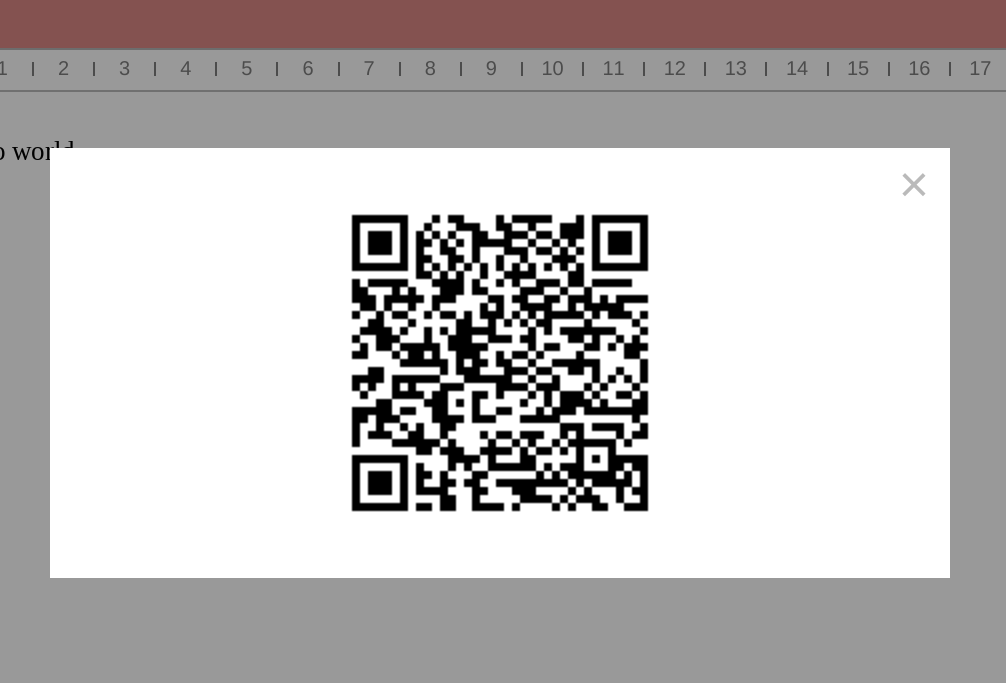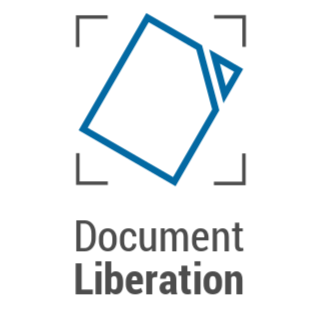Cambridge, United Kingdom, December 18, 2018 – Collabora Productivity, the driving force behind bringing LibreOffice to the cloud, is excited to announce a release candidate of the new major release of CODE 4.0. This release includes a fresh look, mobile improvements as well as improved interoperability.
CODE 4.0 is a great way for early adopters, developers, customers, partners and home users to try out, and get involved with the latest development work, however it is not recommended to be used by organizations.
We will be releasing our enterprise product Collabora Online 4.0 within weeks after iterating CODE and improving it based on feedback from our customers and partners. For more information see http://collaboraoffice.com/code.
What has changed?
This release includes a fresh look – with improved toolbar colors and layout, mobile improvements – with support for Retina and HiDPI screens along with easier shape editing, as well as improved interoperability provided by upgrading the underlying document rendering core to Collabora Office 6.0. In addition, we introduce support for Vereign’s blockchain-powered platform which provides Collabora clients with an authentic identity management solution. In more detail:

Refreshed Toolbar icons and layout
Toolbars have been refreshed to integrate the Colibre icon theme (thanks to Andreas Kainz) and lighter coloring, which significantly improves the look of 4.0. Compare before & after:
Before:

After:

In addition, a new icon to hide the menu bar is now present. It further simplifies the UI.
The document file name – which you can click-to-rename – has been tucked into the menu more neatly. Further, a ‘click-able’ modification time – which when clicked launches the revision history – has been added.

While Collabora Online can be used as a software component integrated into a variety of products, these improvements to the visual design have been developed in close partnership with Nextcloud.
Integrating with Vereign
Vereign is a Swiss open source company building a blockchain based self-sovereign identity and personal data store. It can be hardened to Swiss banking standards. They are currently running a beta program to add authentic communication to e-mail, starting with Gmail and Roundcube. Collabora has partnered with Vereign to also provide authentic documents bearing the qualified electronic signature of your hardened self-sovereign identity.

The document_signing_url configuration key in loolwsd.xml will be pre-set to app.vereign.com for future CODE releases, as/when the API is stable. However Collabora Office users will need to enable this integration explicitly if they want it. If you are already signed up with the Vereign beta program, to send authentic email with your Gmail account, your self-sovereign identity and its passports will be immediately usable for signing documents in CODE 4.0.
Use the File → Sign document menu option to activate the ‘Vereign Toolbar’ to log into this service.

For the users who are accustomed to using the Vereign app, we have created a QR code dialogue so as to speed up their log-in process.

And after using the identity to sign the document with a qualified electronic signature according to the EU and the Swiss laws, you should see:

Vereign also supports storing – and later publishing – copies of signed documents to provide you with an independent, user owned archive of your interactions. This archive is blockchain secured, as is the audit trail of all your identity interactions.
Vereign is currently gathering interested parties for Proof of Concept (PoC) deployments next year and partners with potential use cases are encouraged to contact Vereign directly.
Improved shape editing
To make shape editing much more pleasant, and more helpful for touch users we have enlarged the size of the selection handles and made them circular. We have also added a more convenient and familiar rotation control to avoid needing to use the shape dialogue to rotate objects.
Rotation control added to shape dialogues:


When shapes are being re-sized or re-positioned, instead of just showing a rectangular profile of where the object will end up, we show a semi-transparent re-sizing preview of the new shape in its position at the new size:
Re-sizing preview:


In addition to make shape insertion easier we added a palette of all the built-in custom shapes allowing easy insertion of new shapes into the document.

Mobile device improvements
Mobile device support has improved significantly in this release in a number of critical areas. Time to first document load is improved – though it has always been possible to load, layout and calculate large and complex documents on the server – avoiding complexity and battery life impact on a small mobile device.
We have introduced a simple, stripped down viewing mode at first, to make it easier to view documents in an uncluttered way.
Stripped down viewing mode:


Toolbars are easier to use, can auto-hide, and scroll to allow a wider selection of commonly used functionality. The menus are also far easier to scroll and interact with deeper menu hierarchies.
Pinch to zoom, pan, and other multi-touch behaviors are also improved, along with the ability to zoom and pan into different areas of complex dialogues allowing the full rich functionality of the desktop designed dialogues that are larger than a mobile screen to be used conveniently.
Zooming and panning into different areas of complex dialogues:


Improvements to the special character dialog making it easier to use favorite characters in 4.0 are also visible here.
Retina / HiDPI display improvement
Version 4.0 now can take advantage of the browser’s native higher DPI to render at the display’s real resolution, getting crisp pixel rendering, for example at 200% zoom:
Before and After:


It can be hard to appreciate the improvement here, but scaling each pixel up can give a better feel for the win:
Before and After:


This has a significant effect across all components, and particularly Calc which now has a 200% zoom option.
Before and After:


By avoiding the browser needing to do a local scaling, we get much crisper text, and conditional formatting, as well as using your display to best effect.
We also moved to using scalable vector Colibre icons for dialogues, and rendering these at a higher resolution when needed too.
Miscellaneous Online improvements
- Security and document jail creation performance – particularly on stackable file-systems – has been significantly improved by removing all of the Collabora Office code from the document jails.
- Improved Thumbnailing API via accelerated convert-to implementation, allowing easier file browsing.
- Translations have been expanded, thanks to the enthusiastic LibreOffice teams to include reasonable localizations to thirty-seven popular languages.
Changes for partners & integrators
As we add new features, we have added a way of advertising those that are present with a new hosting/capabilities endpoint which returns a json. The current content in 4.0 is:
{"convert-to":{"available":true}}
where the value true or false depends on the actual availability of the convert-to functionality depending on the configuration of the Collabora Online.
We have extended our WOPI-like protocol, to allow more annotation:
The Save operation (in reality a PUT) can be annotated as having been triggered by all users leaving the document with an additional: X-LOOL-WOPI-IsExitSave header.
New CheckFileInfo entries
EnableShare: Enables a menu item which triggers a postMessage calledUI_Share. This postMessage can be handled to present a user interface element (like a sidebar or dialog) to configure sharing of the current file.EnableInsertRemoteImage: Enable menu entry and toolbar item which trigger a postMessage calledUI_InsertGraphic. This may be used to present a user interface element (like a dialog) allowing the user to pick an image from the integration. The integration is supposed to provide a temporary URL that may be downloaded once, and return it back via a postMessageAction_InsertGraphicwithValuesset to the temporary URL.DisableChangeTrackingRecord: Force recording of track-changes in the Writer document to off.DisableChangeTrackingShow: Force showing the tracked changes in the Writer document to off.HideChangeTrackingControls: Remove the change-tracking menu entries from the user interface.HideUserList: (missing in this Beta, but present in RC1) Hide the list of the users from the user interface. The integrations that want to set this to ‘true’ need to implement the appropriate postMessage handling usingGet_Views_Respsee belowPossible values:true/false: disables / enables everywhere- any combination of ‘
mobile‘, ‘tablet‘, ‘desktop‘ delimited by commas, like “desktop,tablet” (hides the user list in the browser on the desktop and on the tablets)
ObfuscatedUserId: In case the anonymization of logging is turned on, this ID is used in the logs instead of the real user names. NOTE: In production environments, the loglevel should _not_ be set to anything more verbose than WARNING anyway.
New postMessages between the integration and Collabora Online
UI_CreateFile: Requests WOPI host to open a new browser tab and create a new document. The document type is passed as DocumentType argument, and cand be ‘text’, ‘spreadsheet’, ‘presentation’ or ‘drawing’.Get_Views_Respmessage was extended with the following parameters:- ‘
ReadOnly‘: Informs whether the new view accessing the document is read-only (or not) - ‘
IsCurrentView‘: highlights which one of the view is the current user’s one
- ‘
Action_FollowUser: Turn on or off the follow user feature.Parameters:ViewId: NumberFollow: Boolean
When “Follow” is set to ‘true’ or is not defined enables following the editor, disables following when set to ‘false’. When “Follow” is set to true or is not defined, the “ViewId” parameter specifies user to follow. When “ViewId” is not defined, the current editor is followed.
Action_RemoveView:Closes the view with the given ViewId.Parameter:- ViewId: Number
Follow: Boolean
When “Follow” is set to ‘true’ or is not defined enables following the editor, disables following when set to ‘false’. When “Follow” is set to true or is not defined, the “ViewId” parameter specifies user to follow. When “ViewId” is not defined, the current editor is followed.Action_RemoveView:Closes the view with the given ViewId.Parameter:- ViewId: Number
Improvements from Collabora Office 6.0
Collabora Online re-uses the same underlying core document rendering and interoperability engine based on LibreOffice provided by Collabora Office 6.0. CODE 4.0 upgrades us to the new 6.0 version – which includes many improvements from the wider LibreOffice community, such as:
- many improvements across Visio, MS Publisher, Keynote, Pages & Numbers filters (thanks to the Document Liberation Project)

- Much improved EMF+ rendering (thanks to Bartosz Kosiorek)
- Spreadsheet loading and calculation performance improvements
- Substantially improved EMF+ (OLE object) preview rendering
- Improved table styles & border rendering
- Improved interoperability – with many improvements to OpenXML (DOCX, XLSX, PPTX) support, support for new attributes, and wins for legacy SmartArt shapes without DrawingML fallback.
For more details, and credits around Collabora Office 6.0 please see https://www.collaboraoffice.com/collabora-office-6-0/
For more information:
- Communications and Marketing: marketing@collaboraoffice.com
- Sales: sales@collaboraoffice.com
Collabora Productivity is the driving force behind putting LibreOffice in the Cloud, providing a range of products and consulting to enterprise and government. Powered by the largest team of certified LibreOffice engineers in the world, it is a leading contributor to the LibreOffice codebase and community. Collabora Office for Desktop and Collabora Online provide a business-hardened office suite with long-term, multi-platform support. Collabora Productivity is a division of Collabora, the global software consultancy dedicated to providing the benefits of Open Source to the commercial world, specializing in mobile, automotive and consumer electronics industries. For more information, visit www.collaboraoffice.com or follow @CollaboraOffice on Twitter.

